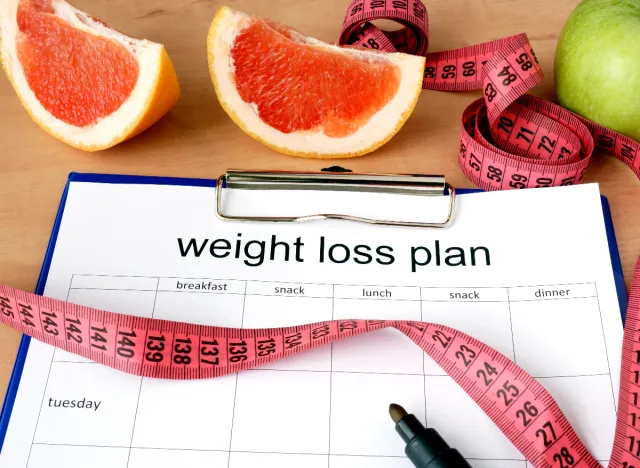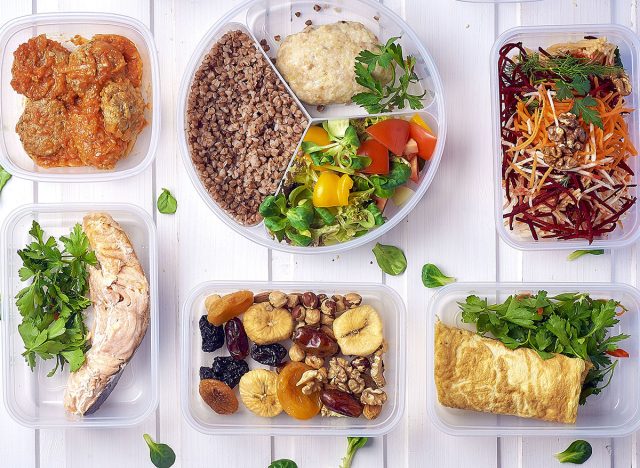We’ve all felt the pressure to see quick results when it comes to our health and fitness goals—especially when there’s an event or milestone around the corner. Whether it’s getting ready for a vacation or simply trying to feel stronger and more confident, the desire to achieve noticeable changes quickly is something many of us can relate to.
Hi, I’m Avery Zenker, a Registered Dietitian and Nutritionist passionate about helping people live healthier, more balanced lives. I understand the allure of rapid transformations, but I also believe in safe, evidence-based methods that prioritize both physical and mental well-being. In this article, I’ll break down what’s possible when it comes to fat loss in a short timeframe and provide practical strategies to help you make informed decisions.
By the end of this read, you’ll not only understand the science behind body fat percentage but also learn actionable tips to achieve your goals responsibly. Ready to take the first step toward a healthier you? Let’s dive in.
Understanding Body Fat and Its Impact

Body fat percentage provides a clearer picture of health risks than BMI because it distinguishes between fat and lean mass, like muscle and bone. Excess visceral fat—fat stored around your organs—can increase the risk of heart disease, diabetes, and other illnesses. Conversely, too little fat can disrupt hormones, lower immunity, and cause reproductive issues.
Significant changes in body fat percentage over a week often result from water retention or glycogen shifts rather than true fat loss. While quick changes are possible, they must be approached carefully to avoid muscle loss, dehydration, or nutrient deficiencies.
The Right Way to Approach Fat Loss

If you’re aiming to reduce body fat quickly, start with your diet. A moderate calorie deficit—where you consume fewer calories than you burn—is key, but avoid extreme restrictions that can deprive your body of essential nutrients. Focus on nutrient-dense foods such as lean proteins, whole grains, and plenty of vegetables. Protein is particularly important for preserving muscle mass, which plays a crucial role in metabolism and overall health.
Exercise is equally vital. Cardiovascular workouts, like jogging or cycling, increase calorie burn, while strength training ensures that the weight you lose comes from fat rather than muscle. A mix of both can accelerate progress and provide lasting results.
Don’t overlook the importance of hydration and sleep. Drinking enough water can prevent your body from mistaking dehydration for hunger, while adequate sleep helps regulate hormones that control appetite. Poor sleep can also lower your energy levels, making it harder to stay active and make healthy food choices.
Safe Ways to Reduce Your Body Fat

What are some safe practices for attempting to reduce body fat percentage quickly?
Reducing body fat percentage quickly should be done with caution. Individuals competing in events such as bodybuilding or weight-class sports often reduce body fat rapidly but do so under professional supervision.
Key Considerations:
- Prioritize rest and recovery: Get adequate sleep, manage stress, and avoid overtraining.
- Strength training: Helps minimize muscle loss and build lean mass.
- Nutrient-dense foods: Ensure sufficient intake of vitamins, minerals, fiber, and protein.
- Protein intake: High-protein diets support fat loss while preserving lean body mass.
Diet Adjustments for Safety: A moderate calorie deficit supports fat loss without extreme hunger or malnutrition. Focus on macronutrient balance with adequate protein for satiety and muscle preservation. Mindful eating—paying attention to hunger cues and avoiding distractions—can also improve dietary habits.
Why Sleep and Water Are Your Fat Loss Allies

How do hydration and sleep affect body fat loss?
- Sleep: Influences hormones like ghrelin (hunger) and leptin (satiety). Poor sleep increases ghrelin and decreases leptin, leading to increased appetite and reduced energy expenditure.
- Hydration: Helps regulate appetite and supports metabolic processes. Dehydration can slow metabolism and hinder fat loss. Staying hydrated improves physical performance, aiding calorie-burning workouts.
Immediate Benefits: Improved sleep and hydration may not lead to immediate visible changes in body fat but can enhance energy levels, exercise performance, and daily activity.
Best Exercises to Boost Your Fat Loss

What types of exercises are most effective for quick fat loss?
A combination of cardiovascular exercise and strength training is ideal.
- Cardiovascular exercise: Boosts daily energy expenditure and supports heart health.
- Strength training: Helps maintain or increase muscle mass, preventing muscle loss during fat loss.
Personalized Programs: Working with a fitness professional can ensure the program aligns with your goals and abilities.
What to Eat (and Avoid) for Fat Loss

What nutritional strategies and supplements support fat loss?
- Focus on nutrient-dense foods.
- Ensure adequate protein to preserve muscle mass.
- Fiber intake supports satiety and gut health.
- Supplements: Creatine can enhance gym performance but does not directly cause fat loss. Multivitamins may help address potential micronutrient gaps but should be taken responsibly.
What to Avoid:
- Excess caffeine intake (limit to 400mg/day).
- Ultra-processed foods low in nutrients and high in calories.
- Alcohol: Excess consumption can contribute to fat gain and nutrient depletion.
Set Your Fat Loss Goals the Right Way

What are realistic expectations for body fat loss in a week?
Losing 0.5% to 1% of body fat per month is typical. In terms of weight, 0.5 to 2 pounds per week is achievable but may include water and muscle loss.
Tips for Setting Achievable Goals:
- Define clear, measurable goals.
- Track progress beyond the scale (e.g., energy levels, sleep, fitness improvements).
- Celebrate non-scale victories.
Protect Your Health During Fat Loss

What are the risks of trying to lose body fat too quickly?
- Malnutrition: Due to insufficient nutrient intake.
- Muscle loss: Reducing muscle mass can slow metabolism.
- Dehydration: Especially from excessive water loss.
- Electrolyte imbalances: Can affect heart function and fluid balance.
- Psychological impact: May foster an unhealthy relationship with food.
Mitigation Strategies:
- Avoid very low-calorie diets (<800 calories/day).
- Include strength training and protein-rich foods.
- Stay hydrated and ensure electrolyte balance.
- Prioritize mental health and seek professional guidance when needed.
Keep Your Mind Healthy While Losing Fat

How can the pursuit of quick fat loss affect mental health and body image?
Unrealistic expectations can lead to feelings of failure and frustration. A focus on numbers rather than holistic health may contribute to disordered eating or body dysmorphia.
Strategies for a Healthy Perspective:
- Set SMART (Specific, Measurable, Achievable, Relevant, Timely) goals.
- Celebrate progress in strength, energy, and sleep quality.
- Practice mindful and intuitive eating.
- Limit exposure to unrealistic portrayals of body image on social media.
- Seek support from positive, health-focused communities.
When to Get Professional Help

When should someone seek professional advice?
Those with pre-existing conditions, a history of disordered eating, or who are pregnant should seek professional guidance before attempting fat loss.
Role of Professionals:
- Dietitians: Provide tailored nutrition plans.
- Trainers: Develop safe and effective workout routines.
- Medical professionals: Monitor overall health and address underlying conditions.
Make Your Fat Loss Last

How can individuals transition from quick loss efforts to ongoing fat management?
- Focus on sustainable habits like balanced meals and regular physical activity.
- Incorporate intuitive eating.
- Adapt health strategies as life circumstances change.
Consistency over Perfection: Gradual changes build lasting habits and support long-term health.
Put Your Health First

Prioritizing health and sustainability ensures that weight loss efforts enhance long-term well-being rather than sacrifice it. Sustainable habits, such as balanced nutrition, enjoyable exercise, and proper rest, lead to meaningful and lasting results.
Final Advice: Clarify your “why” for fat loss. Align your actions with that purpose, focusing on overall health and longevity rather than quick fixes. This mindset supports not just body composition goals but a more fulfilling lifestyle. And if you enjoyed this article, don’t miss these 100 Unhealthiest Foods on the Planet.








